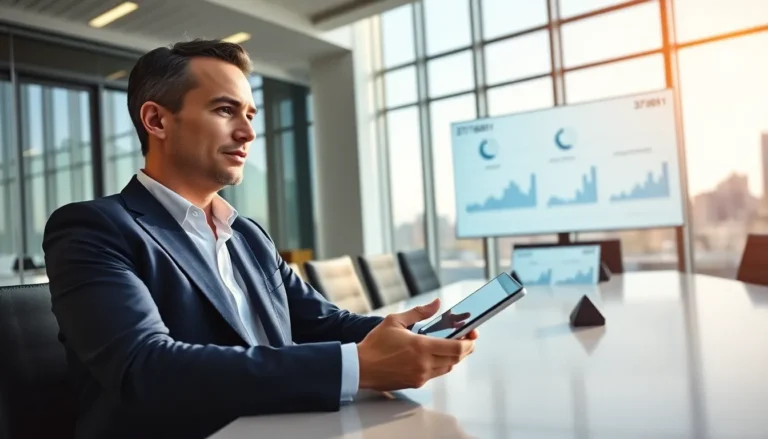Imagine stepping into a craft room that sparks joy and creativity instead of chaos and clutter. A well-designed space can be a game changer for crafters, transforming every project from a daunting task to a delightful adventure. Whether it’s a cozy corner or a full-fledged studio, a craft room renovation can breathe new life into your creative endeavors.
Table of Contents
TogglePlanning Your Craft Room Renovation
A successful craft room renovation starts with clear planning. Understanding the desired outcomes helps in creating a functional and inspiring space.
Defining Your Goals
Setting specific goals for the craft room is essential. Identify what activities the space should accommodate, such as sewing, painting, or scrapbooking. Consider the required storage solutions for supplies and tools. Prioritize organization to minimize chaos. Assess the potential for multi-functional areas, like a workspace that doubles as a display shelf. A detailed vision helps ensure every aspect of the renovation aligns with personal crafting habits.
Budgeting for the Project
Establishing a budget is crucial for any renovation project. Determine how much to allocate for materials, furniture, and decor. Research costs for shelving units, tables, or custom storage options. Factor in optional expenses, such as lighting upgrades or paint. Create a list of must-haves versus nice-to-haves, helping to manage spending effectively. Finalizing a budget not only guides spending but also aids decision-making throughout the renovation process.
Design Ideas for Craft Room Renovation
A well-designed craft room enhances productivity and creativity. Thoughtful design strategies can maximize functionality while fostering inspiration.
Maximizing Space Efficiency
Utilize vertical storage solutions like shelves and pegboards. These structures keep supplies easily accessible. Consider mobile carts for tools which can be moved as needed. Select multi-functional furniture, such as tables with built-in storage, to optimize space. Zone the room, dedicating areas for different activities like sewing or painting, to maintain organization. Employ clear bins for visibility, making it easier to find materials quickly. Adding mirrors can create an illusion of a larger area while reflecting light.
Choosing the Right Color Scheme
Select colors that evoke creativity and calmness. Soft pastels can create a serene environment. Bright shades, such as yellow or turquoise, foster energy and cheerfulness. Consider natural light while painting, as it influences how colors appear. Use two or three complementary colors to create a cohesive look without overwhelming the senses. Incorporating a feature wall with bold colors or patterns can add interest and character. Keep in mind that color psychology affects mood, so choose hues that inspire creativity.
Essential Features for a Craft Room
A well-designed craft room includes essential features that cater to creativity and functionality. Attention to detail in storage and workstation design plays a critical role in optimizing the crafting experience.
Storage Solutions
Efficient storage solutions are key to an organized craft room. Clear bins allow visibility for supplies like ribbons, beads, and papers. Shelving units provide ample space to store various materials, while vertical storage maximizes wall space. Mobile carts offer flexibility, making supplies easily accessible when needed. Consider incorporating pegboards for hanging tools and other frequently used items for quick access. Utilizing drawer organizers helps keep small items sorted and easy to find.
Workstation Design
A well-planned workstation enhances productivity. It’s vital to dedicate a spacious surface for crafting activities, ensuring enough room for projects. Adjustable height tables accommodate various crafting techniques and ergonomic needs. Comfortable seating is also important; it should promote good posture during long crafting sessions. Designing the workstation near natural light boosts creativity and reduces eye strain. Arranging tools and materials within arm’s reach streamlines the crafting process and minimizes disruptions.
DIY vs. Hiring a Professional
Deciding between a DIY approach and hiring a professional for a craft room renovation impacts both the budget and the outcome. Each option has distinct advantages and disadvantages.
Pros and Cons of Each Approach
DIY renovations offer significant cost savings and abundant opportunities for personalization. Crafting enthusiasts can implement creative ideas without labor fees. However, time investment may become substantial, especially for complex tasks. Limited expertise in certain skills can lead to mistakes, which could negate initial savings. Hiring a professional ensures high-quality work with expert insights. Professionals provide extensive experience and may expedite project completion. Despite the benefits, this route incurs higher costs, limiting personalization to some extent. Weighing these considerations is critical for crafters.
When to Call in an Expert
Calling in an expert becomes essential when the renovation demands specialized skills. For instance, electrical work or plumbing issues require professional knowledge to ensure safety and compliance. Additionally, if a project exceeds a crafter’s time or resource capabilities, hiring an expert helps maintain momentum. Complexity also plays a role; if combining multiple activities necessitates advanced planning, a professional can offer valuable guidance. Lastly, if a crafter feels overwhelmed by choices, an expert can streamline decision-making for a cohesive design. Engaging professionals at these critical points can enhance the end result.
Conclusion
A well-planned craft room renovation can breathe new life into creative pursuits. By focusing on organization and functionality crafters can create a space that inspires and enhances productivity. Whether opting for DIY or hiring a professional the key lies in understanding personal needs and budget constraints.
Incorporating efficient storage solutions and thoughtful design elements not only maximizes space but also promotes a joyful crafting experience. With the right approach the renovated craft room becomes more than just a workspace; it transforms into a sanctuary of creativity where ideas flourish and projects come to life. Embracing this journey can lead to a more fulfilling crafting experience.


